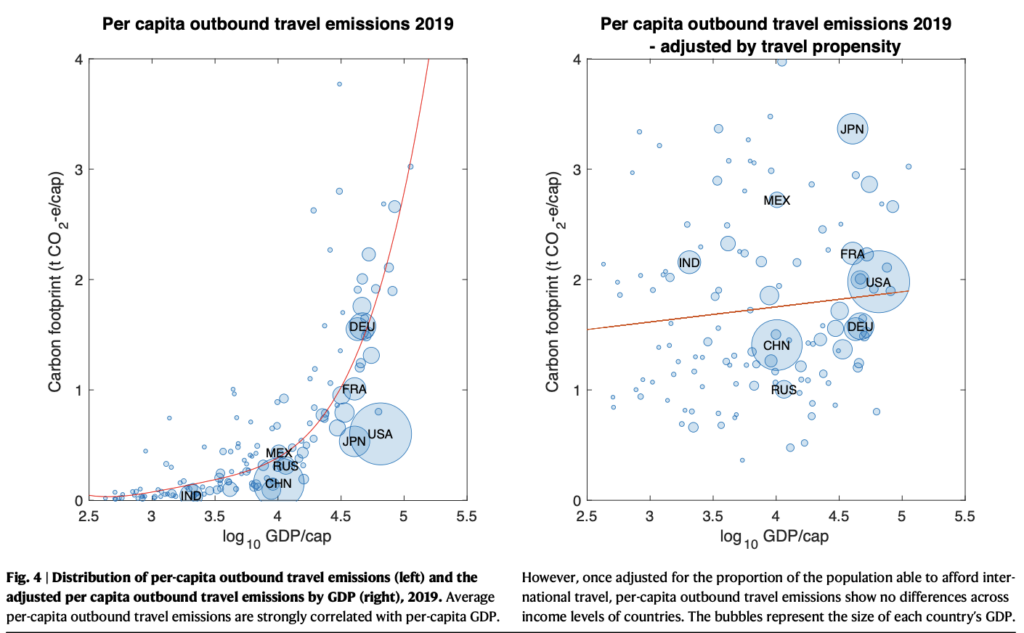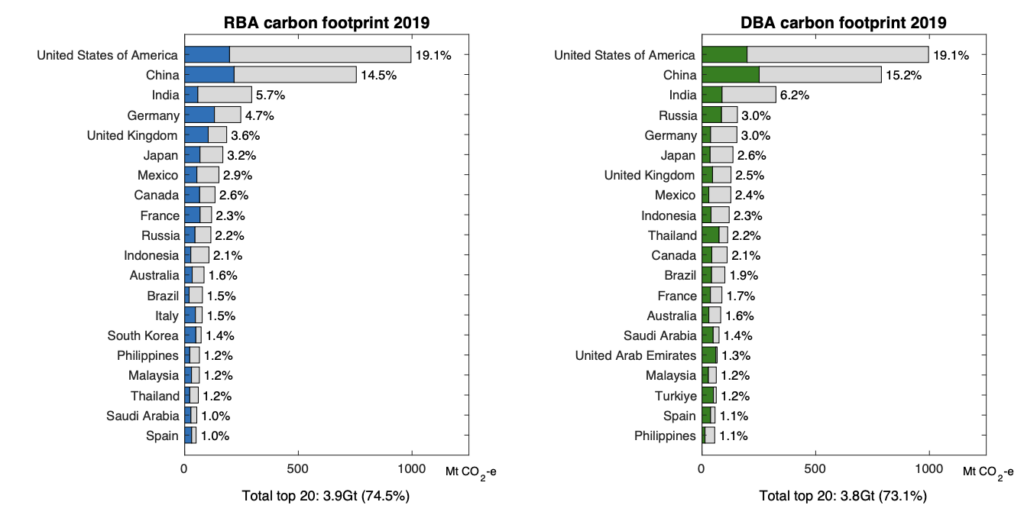A striking new study published in Nature Communications by academic researchers Ya-Yen Sun, Futu Faturay, Manfred Lenzen, Stefan Gössling and James Higham has quantified a vast gulf in the carbon footprints of global travelers: Residents of high-income countries now generate more than 100 times the tourism-related emissions per person than those living in the world’s poorest nations.
The study’s findings raise urgent questions about equity and responsibility in efforts to combat the escalating climate crisis.
According to the research, which analyzed tourism spending and greenhouse gas emissions data from 175 countries, the wealthiest nations — classified by the World Bank as those with a per-capita Gross National Income above $12,375 — produce over 3.1 tonnes of CO₂-equivalent (tCO₂-e) per capita from tourism each year.
In stark contrast, individuals in the lowest-income countries, where annual per-capita incomes fall below $1,025, see tourism-related emissions of just 0.02 tonnes of CO₂-e per person. That’s a difference of more than 100-fold.

The report’s authors attribute this immense inequality primarily to varying levels of economic prosperity. Those in richer countries are more likely to travel internationally and indulge in carbon-intensive activities, such as long-haul flights. In poorer nations, limited financial resources mean travel—particularly long-distance tourism—is out of reach for most people, resulting in negligible per-capita emissions.
However, the study also shines a light on a second layer of inequality hidden within middle- and lower-income countries. In these regions, it is often only a small, affluent segment of the population that can afford international holidays. This group, although small in number, can still produce emissions comparable to frequent flyers in wealthier nations. As a result, national averages mask substantial internal disparities, with a small elite generating the majority of tourism-linked carbon pollution, while the majority of citizens contribute very little.
Also, according to the study, global tourism emissions are heavily skewed towards a relatively small number of countries. In 2019, just 20 nations collectively generated about three-quarters of all tourism-related greenhouse gas emissions worldwide.
The United States, China, and India alone accounted for 39% of these emissions, illustrating a highly uneven distribution. Under both the residence-based accounting (RBA)—which attributes emissions to the traveler’s country of origin—and destination-based accounting (DBA)—which assigns emissions to the places where tourism activities occur—the same set of high-emitting countries dominates the global footprint.
The findings highlight that the world’s largest and wealthiest economies bear a disproportionate share of responsibility for tourism’s climate impact, reinforcing the need for targeted policy interventions and demand management strategies in these major markets.

The finding is part of a broader picture painted by the study: Tourism’s global carbon footprint grew 3.5% annually between 2009 and 2019, far outpacing the global economy. Today, tourism accounts for about 8.8% of all anthropogenic greenhouse gas emissions. Although technology and efficiency improvements have helped curb the intensity of these emissions, the massive growth in travel demand continues to overwhelm those gains.
The authors argue that current approaches focused solely on improving efficiency and technology will not suffice. Instead, they suggest policy measures that address demand—such as limiting the growth of long-haul travel—are needed. Such steps, they say, would help ensure a more equitable distribution of tourism’s benefits and burdens, preventing wealth disparities from driving global emissions ever higher.
As climate change intensifies and developing countries face some of the harshest environmental impacts, understanding and addressing these deep-rooted inequalities is becoming increasingly urgent. The study’s message is clear: sustainable tourism solutions must not only cut emissions but also recognize and redress the profound imbalances in who gets to travel and who pays the environmental price.
Skift’s in-depth reporting on climate issues is made possible through the financial support of Intrepid Travel. This backing allows Skift to bring you high-quality journalism on one of the most important topics facing our planet today. Intrepid is not involved in any decisions made by Skift’s editorial team.
